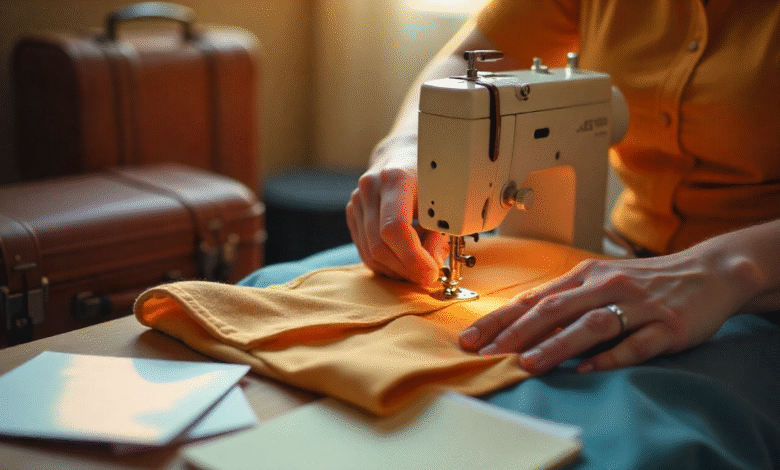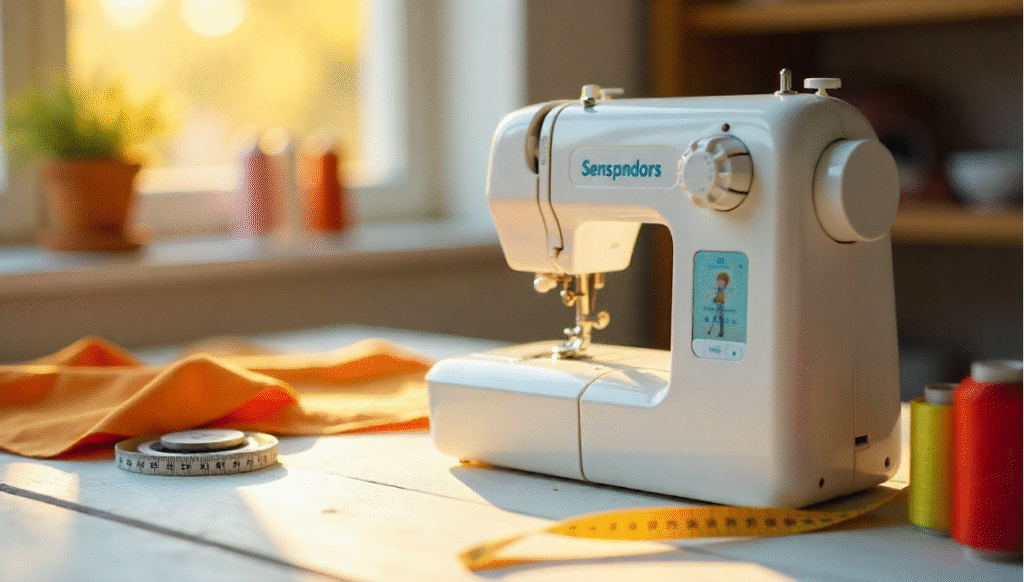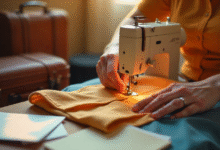Best Handheld Sewing Machine Easy Guide for Quick Sewing at Home

Handheld Sewing Machine is a small and easy tool that helps you fix clothes quickly. If your shirt has a tear or your pants need a quick stitch, a handheld sewing machine can save your day. Unlike big sewing machines, this little tool is light, portable, and simple to use. You do not need any special skills to start sewing with it. It works on batteries or USB power, so you can carry it anywhere. Many people love handheld sewing machines because they can repair clothes anytime, even while traveling. It is perfect for small sewing tasks like fixing hems, sewing buttons, or closing small holes. With a handheld sewing machine, you do not have to wait to use a big sewing machine. It makes home sewing faster and less stressful for beginners and busy people.
Using a handheld sewing machine is very easy and fun. Most machines have a simple design with a spool of thread, needle, and small handle. You just need to put the thread in the right place, hold the fabric, and move the machine along the cloth. It can sew different types of fabric like cotton, denim, or silk, though very thick materials may need extra care. Many models come with extra features like adjustable speed, automatic threading, and built-in LED light, which makes sewing easier and more precise. Handheld sewing machines are not only for repairs—they can also help you make small DIY projects at home. They are safe to use, lightweight, and save a lot of time compared to traditional sewing. Anyone, from a beginner to an experienced person, can enjoy using a handheld sewing machine for daily sewing needs.

Why a Handheld Sewing Machine is Perfect for Beginners
A handheld sewing machine is one of the easiest tools for beginners. You do not need to learn complicated settings or large machines. Its small size makes it simple to control, and you can hold it in one hand while sewing. This is very helpful for people who want to start learning sewing at home without spending a lot of money on big machines. Beginners can practice on old clothes or scrap fabric to understand how the machine works. The small size also helps you learn straight stitching, basic hemming, and fixing small tears.
Beginners do not need extra skills to operate handheld sewing machines. Many models have easy threading and simple switches. You can start sewing in a few minutes. With practice, beginners can improve sewing speed and accuracy. The handheld sewing machine also allows learning without fear. If you make mistakes, it is easy to remove stitches and redo them. This makes it a perfect choice for children, teens, or adults who want to start sewing at home.
How Handheld Sewing Machine Works: Simple Step-by-Step
Handheld sewing machines work in a simple way. First, you need to insert the thread spool into the machine. Then, thread the needle carefully following the instructions. After threading, place the fabric under the needle and hold the machine gently. Turn it on and move it along the fabric slowly. The machine will stitch automatically. Some machines work manually using a small crank or handle.
Most handheld sewing machines have a speed option, which is helpful for beginners. Start with slow speed and practice moving the machine evenly. Make sure the thread is tight but not too tight, so the stitches look clean. Small mistakes can happen, but you can adjust easily. The simplicity of handheld sewing machines makes sewing faster and less stressful than traditional machines.
Top Features to Look for in a Handheld Sewing Machine
When buying a handheld sewing machine, you should check these features:
- Portability: Choose a light and small machine that is easy to carry.
- Power Source: Some machines use batteries, others use USB charging. Pick what suits you.
- Threading System: Automatic threading makes sewing easier.
- Speed Control: Adjustable speed helps beginners and experts.
- Needle Safety: A needle cover or safety lock is important for kids.
- LED Light: Helps you see stitches clearly in low light.
- Extra Accessories: Some machines come with extra needles, thread, and bobbins.
Checking these features helps you get the best machine for your needs.
Benefits of Using a Handheld Sewing Machine at Home
Handheld sewing machines have many benefits for home use:
- Quick Repairs: Fix small tears, buttons, and hems instantly.
- Save Time: No need to wait for a big sewing machine.
- Easy to Learn: Beginners can start sewing without special training.
- Portable: Carry it anywhere, even on trips.
- Affordable: Less expensive than traditional sewing machines.
- DIY Projects: Make small crafts or home decorations easily.
With these benefits, a handheld sewing machine is a practical choice for every home.
Handheld Sewing Machine vs Traditional Sewing Machine: Quick Comparison
| Feature | Handheld Sewing Machine | Traditional Sewing Machine |
| Size | Small and portable | Large and heavy |
| Power | Battery/USB | Electric |
| Ease of Use | Very easy | Requires learning |
| Repair Speed | Quick small repairs | Can do large projects |
| Price | Affordable | Expensive |
Handheld sewing machines are perfect for quick repairs, while traditional machines are better for big sewing projects.
Best Tips to Maintain Your Handheld Sewing Machine
Maintaining your handheld sewing machine helps it last longer:
- Clean dust and lint after each use.
- Use good quality thread to avoid tangling.
- Check the needle and replace it if bent or dull.
- Store the machine in a safe, dry place.
- Charge the battery fully before use if it is rechargeable.
Following these tips ensures smooth sewing and longer life for your machine.
Small Projects You Can Make with a Handheld Sewing Machine
A handheld sewing machine is not only for repairs. You can make small DIY projects like:
- Pillow covers
- Cloth bags
- Simple clothes for dolls or pets
- Decorative table mats
- Quick fabric crafts for gifts
These projects are simple, fun, and perfect for beginners. Using a handheld sewing machine saves time and effort compared to traditional sewing.
How to Choose the Right Handheld Sewing Machine for You
To choose the best handheld sewing machine, consider:
- Your sewing needs: Repairs, crafts, or small projects.
- Fabric types: Some machines handle thick fabric better.
- Budget: Affordable machines work well for beginners.
- Extra features: LED light, speed control, and accessories make sewing easier.
By considering these points, you can pick a machine that suits your lifestyle.
Conclusion
- Using too thick fabric that the machine cannot handle.
- Pulling the fabric too hard while sewing.
- Not threading the needle properly.
- Skipping machine cleaning and maintenance.
- Sewing too fast before mastering the control.
Avoiding these mistakes ensures smooth and safe sewing.
FAQs
Q1: Can a handheld sewing machine sew thick fabrics?
A1: Handheld sewing machines work best on light to medium fabrics. Very thick fabrics like heavy denim may require extra care or multiple passes.
Q2: Do handheld sewing machines need batteries?
A2: Most handheld machines work on batteries or USB charging. Some small models may work manually with a hand crank.
Q3: Can beginners use handheld sewing machines?
A3: Yes! They are perfect for beginners because they are simple, light, and easy to control.


